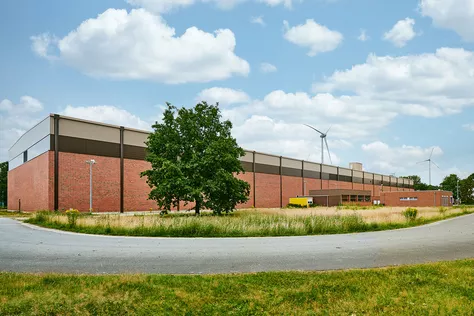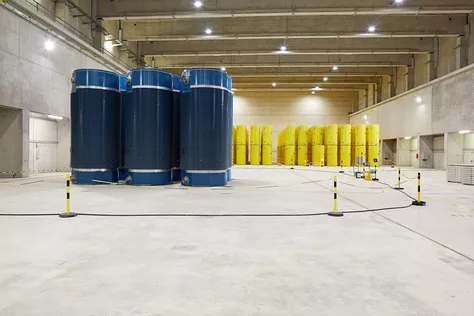Storage of the FRM II fuel elements in Ahaus
The Ahaus Interim Storage Facility (BZA) is operated by the federally owned BGZ Gesellschaft für Zwischenlagerung mbH (BGZ for short). The interim storage facility in Ahaus is specifically intended for the storage of fuel assemblies from German research reactors. Fuel elements from the research reactor that was operated in Dresden-Rossendorf between 1957 and 1991 have been stored there since 2005.
The 3rd partial licence for the FRM II already stipulates that the spent fuel elements are to be transferred to the Ahaus interim storage facility (BZA). For this reason, a contract was already concluded in 2000 between the Free State of Bavaria and Brennelement-Zwischenlager Ahaus GmbH regarding future storage. This planned interim storage is to be realised as contractually agreed.
The current storage capacity for spent fuel elements from the FRM II in Ahaus extends over seven storage areas for 21 casks. This results in a total capacity of 105 spent fuel assemblies, as three casks can be stacked on top of each other and one cask can hold five FRM II fuel assemblies.
Transport to a final repository
A final repository has yet to be found in Germany. Whether and to what extent further conditioning of the fuel elements is necessary before they are stored in a future repository depends on the storage conditions there.
Further information can be found on the website of the Bundesgesellschaft für Endlagerung mbH (BGE).

